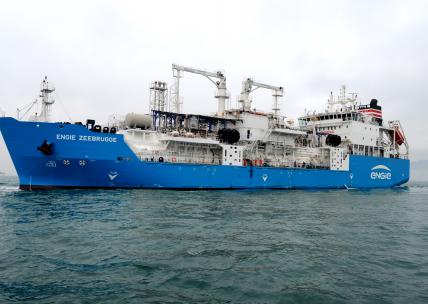Environmental
Gas fueled ships for cleaner shipping
Aug. 30 2018
Tightening environmental regulations, setting limits on shipping emissions, have increased the attractiveness of gas as a marine fuel and LNG has emerged as the principal gas option being adopted today.
Virtually sulfur-free, LNG enables owners to comply with IMO’s global 2020 0.50% sulfur cap and with the requirements in Emission Control Areas of 0.1% sulfur. Additionally, with the right propulsion system, LNG can meet new Nox emissions requirements as well.
Consequently, demand for LNG fueled ships is growing. But as a proportion of the world orderbook and fleet demand for LNG and gas fueled ships is still modest – can gas go mainstream?
LNG as fuel: going mainstream?
The decision by CMA CGM in 2017 to order nine BV-classed gas-fueled 22,000 TEU vessels has been seen as a turning point in industry adoption of LNG as a marine fuel. Previously, LNG had been perceived as a niche market choice, best suited to vessels such as ferries, offshore service vessels or tugs operating exclusively in Emission Control Areas. The technology was well known, after all gas carriers have been using LNG as part or most of their fuel source for many years. But until the landmark decision by CMA CGM, no major ocean-going merchant ship operator had chosen gas.
Additionally, more than 20 cruise ships on order for delivery over the next decade will be LNG fueled in a move that will enhance air quality in cruise destination ports and for passengers and crews onboard. Operators such as Ponant and MSC Cruises have ordered LNG fueled ships.
Expanding infrastructure
Bureau Veritas is taking the lead in supporting the introduction of dedicated LNG bunker vessels
While bunkering infrastructure is expanding LNG is not yet available everywhere – many key bunkering ports do not yet have a solution in place and bespoke solutions to secure LNG as a marine fuel are still necessary.
A crucial development is the introduction of dedicated LNG bunker vessels able to provide ship-to-ship bunkering, providing the requisite flexibility. Bureau Veritas has classed a number of these new LNG bunker vessels (LNGBVs), including the first ever built, the ENGIE Zeebrugge.
The CMA CGM vessels under construction will have their needs met by an 18,600 m3 bunkering vessel chartered by TOTAL and operated by MOL. Like the container ships themselves, the vessel is classed Bureau Veritas.
Ports around the world are now developing small-scale LNG facilities and working to understand what is required to enable LNG as a fuel to be available in their ports – to refuel the growing fleet of ships needing gas bunkers. Bureau Veritas is working with many of these ports and potential suppliers to help them understand and manage the risks involved.

Bureau Veritas classed the first ever purpose-built LNG bunkering vessel, the ENGIE Zeebrugge
Courtesy Engie
MANAGING RISK AND REMOVING OBSTACLES
One issue that is being resolved partly as a result of work by CMA CGM together with Bureau Veritas is simultaneous refueling and (off)loading - SIMOPS.
SIMOPs is a requirement for ships needing to carry out cargo operations at the same time as bunkering – such ships include container ships, ferries and cruise ships. All need to perform all port operations in the same place, simultaneously. To enable this Bureau Veritas carries out a detailed risk analysis and works with all stakeholders to help them understand the challenge and share the results of detailed risk analysis work to deliver an effective solution.
LNG – available now
There is no such thing as the perfect fuel. But LNG is an attractive option - available today, offering an immediate solution to Marpol Annex VI requirements for emissions globally and in emission control areas. And growing numbers of owners are seeing the benefits.
Whether LNG can capture a substantial share of deep sea ships remains to be seen. Construction costs, questions of availability, anticipation that low sulfur fuel oils will be available and the implications of the need to reduce GHG emissions are all key issues, posing questions for which there may be no easy answers for all operators.
Decarbonizing shipping
Looking beyond the introduction of the global sulfur cap in 2020, the recent requirements to reduce GHG emissions from shipping, by more than 50% by 2050, present a challenge that will require significant further thinking and development. LNG is an excellent choice for many operators now – at a time when there are limited options for compliance but the requirement for low carbon future fuels will require solutions not commercially available today.
We are working on those solutions to provide the leadership, risk management services, guidelines and rules that stakeholders need: to help ensure that gas-fueled shipping is safe and meets performance requirements.
Dedicated Rules for LNG vessels
Bureau Veritas offers dedicated Rules for ships seeking to adopt LNG as fuel, both newbuildings and conversions. We also offer a GAS-PREPARED notation for owners looking to future-proof their ships and an LNG Bunkering Ship notation for the growing array of vessels built to meet demand for fuel.










